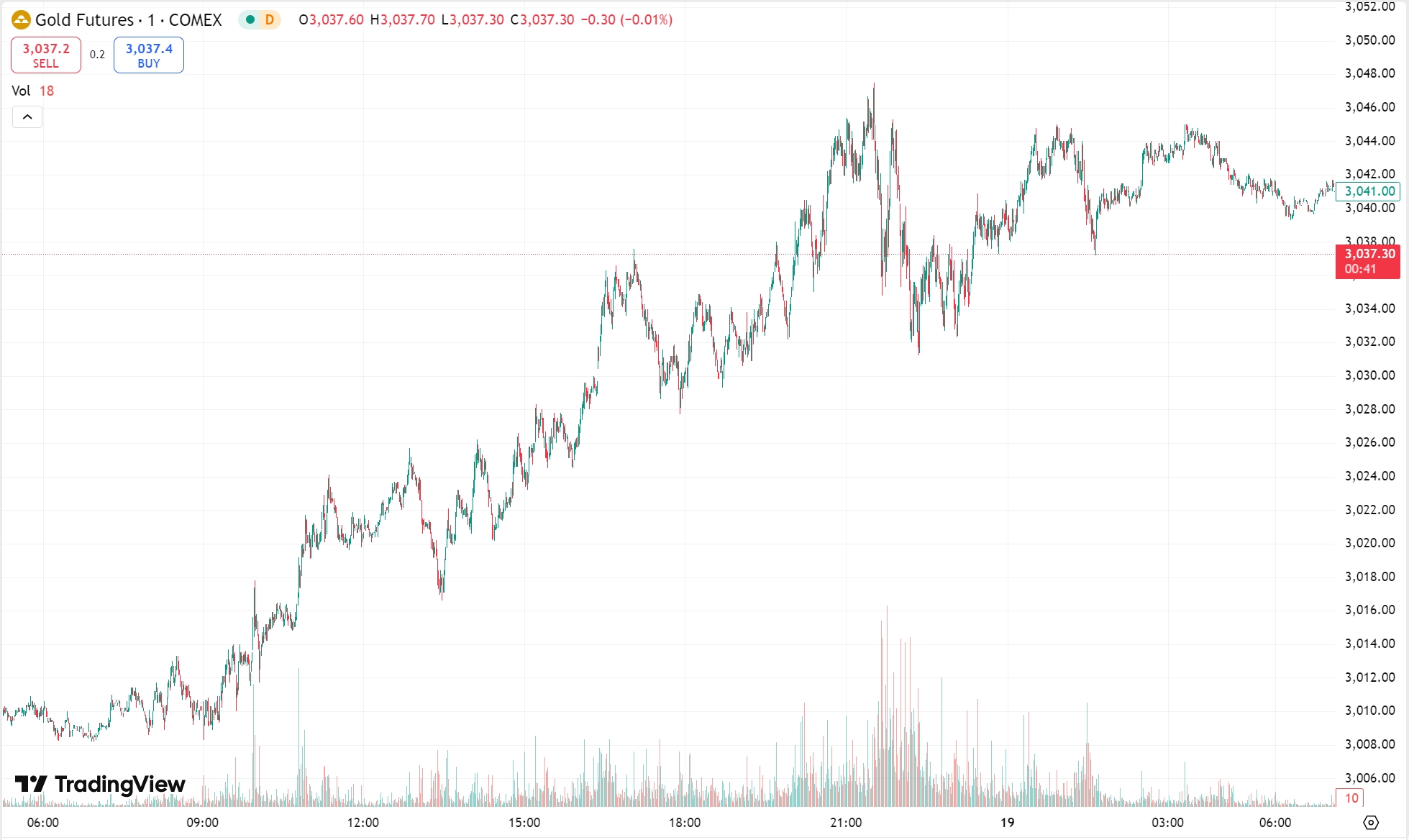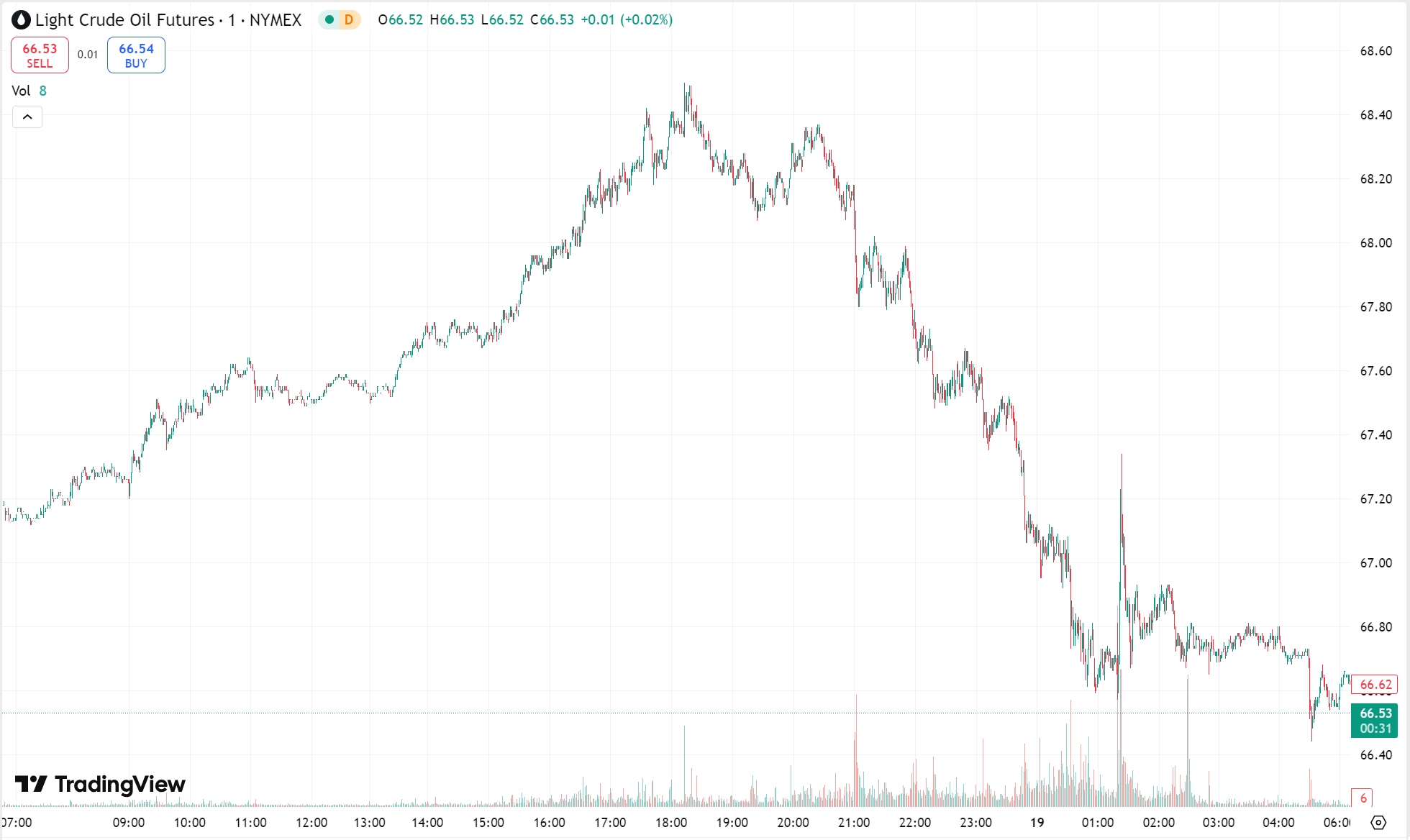
Market Recap
Escalating tensions in the Middle East fueled safe-haven demand, sending gold prices soaring past $3,030 per ounce, hitting an all-time high of $3,038.23 before settling at $3,034.13. Meanwhile, crude oil initially climbed to a two-week high but later retreated, closing down 1% as supply concerns eased following Russia’s agreement to halt attacks on Ukraine’s energy infrastructure.
Gold Overview
Heightened geopolitical tensions in the Middle East drove gold sharply higher on Tuesday, with prices reaching a record $3,038.23 per ounce before pulling back. At the close, spot gold was up 1.1%, settling at $3,034.13 per ounce.
Renewed conflict in Gaza added to market uncertainty, further boosting demand for gold as a safe-haven asset. Reports indicate that Israel launched military strikes on Hamas targets, raising concerns over a potential breakdown in ceasefire talks. Palestinian sources confirmed multiple airstrikes across the region.
Nicky Shiels, Head of Metals Strategy at MKS PAMP SA, stated:
“Israel’s strikes on Hamas positions in Gaza have escalated tensions, potentially jeopardizing the ceasefire. This development is providing additional upside momentum for gold.”
Gold’s rally continues its strong performance from last year, with prices already up over 15% year-to-date, setting 14 new record highs in 2024 alone.
Wall Street investment banks have raised their gold price forecasts. UBS predicts gold will reach $3,200 per ounce within the next year. Analysts Wayne Gordon and Giovanni Staunovo highlighted that Trump’s upcoming reciprocal tariffs on April 2 could trigger heightened risk aversion, further boosting gold demand.
Upcoming Events
The market is now focused on the Federal Reserve’s interest rate decision on Thursday at 2:00 AM (UTC). Fed Chair Jerome Powell’s press conference will follow, with investors closely monitoring the Fed’s economic outlook and its stance on Trump’s trade policies.
Gold – Technical Outlook
Gold extended its rally on Tuesday, hitting a record $3,038 per ounce during US trading hours. While the uptrend remains strong, analysts caution that a potential correction could emerge, particularly around the $3,040–$3,050 resistance zone.

- Support Levels: $3,018 – $3,013
- Resistance Levels: $3,040 – $3,050
Gold – Trading Strategy
- Primary: Buy on pullbacks, favoring long positions.
- Secondary: Consider short positions near resistance zones.
Crude Oil Overview
Crude oil initially surged to a two-week high but later retraced as Russian President Vladimir Putin supported a proposal for both Russia and Ukraine to halt attacks on each other’s energy infrastructure. This tempered concerns about Middle East supply disruptions.
At the close:
- WTI April crude fell $0.68 (-1%) to $66.90 per barrel
- Brent May crude dropped $0.51 (-0.71%) to $70.56 per barrel
Key Market Drivers:
- Putin’s Pledge on Energy Infrastructure
- According to Xinhua News, Putin and Trump agreed in a phone call that both Russia and Ukraine should refrain from targeting each other’s energy facilities for at least 30 days.
- Russian Oil Supply Outlook
- The US Energy Information Administration (EIA) reported that Russian crude production currently stands at 9.2 million barrels per day (bpd)—down from 9.8 million bpd in 2022 and well below the 10.6 million bpd peak in 2016.
- Trump’s Trade Tariffs Pressure Oil Demand
- The OECD warned that Trump’s new trade measures could slow economic growth across the US, Canada, and Mexico, ultimately weighing on global energy demand.
- Bob Yawger, Head of Energy Futures at Mizuho, commented:
“Recession fears are mounting, and tariffs have become the biggest economic threat. The multi-country tariff rollout on April 2 could significantly impact energy markets.”
Crude Oil – Technical Outlook
Oil remains in a broad trading range, with prices pulling back after testing resistance near $67.90. While short-term momentum suggests further downside, long-term support near $65.50 remains intact.

- Support Levels: $65.50 – $65.00
- Resistance Levels: $68.00 – $68.50
Crude Oil – Trading Strategy
- Primary: Sell on rebounds near resistance.
- Secondary: Buy on dips near key support zones.
Risk Disclosure
Securities, Futures, CFDs and other financial products involve high risks due to the fluctuation in the value and prices of the underlying financial instruments. Due to the adverse and unpredictable market movements, large losses exceeding your initial investment could incur within a short period of time.
Please make sure you fully understand the risks of trading with the respective financial instrument before engaging in any transactions with us. You should seek independent professional advice if you do not understand the risks explained herein.
Disclaimer
This information contained in this blog is for general reference only and is not intended as investment advice, a recommendation, an offer, or an invitation to buy or sell any financial instruments. It does not consider any specific recipient’s investment objectives or financial situation. Past performance references are not reliable indicators of future performance. Doo Prime and its affiliates make no representations or warranties about the accuracy or completeness of this information and accept no liability for any losses or damages resulting from its use or from any investments made based on it.
The above information should not be used or considered as the basis for any trading decisions or as an invitation to engage in any transaction. Doo Prime does not guarantee the accuracy or completeness of this report and assumes no responsibility for any losses resulting from the use of this report. Do not rely on this report to replace your independent judgment. The market is risky, and investments should be made with caution.


